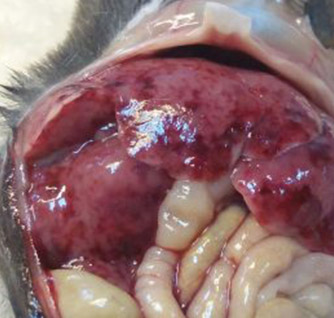The Usage of Animal Models for Pre-Clinical Trials: a pathological, comparative approach
Author: Emmanuel Loeb.
The utilazation of animal models offers the scientist a great opportunity to examine his developed product (drug or medical device) on a whole body system prior to the human trials. The animal model intends to mimic in a group of animals a human similar pathological condition . Leaving the ethical discussion to another essay, we can ask ourselves what is the real relevance in performing experiments on animal models as a mile stone in the process of introducing the humanity with new health technologies. As an experimental pathologist I deal on a daily basis with samples that need to be evaluated after being harvested from animal models studies. Comparative pathology is one of the branches in our discipline, providing the pathologist morphologic tools to study pathological lesions derived from animal model and extrapolate the obtained information to human diseases. In this essay I will discuss some aspects of the pathological approach and action patterns of the field of experimental pathology.
Safety studies:
Toxicological pathology is an established branch within the field of experimental pathology. Drugs and medical devices are regularly tested on animals in order to avoid and to exclude a possible toxic/side effect and to study the toleration for different doses of the tested items. As part of this examination, cellular, morphological entities named cytotoxic changes are being evaluated. It is important to note that this part of the histological evaluation is performed under very strict rules. For example, the U.S. Food and Drug Administration has recommended of a list of a standard tissue for histopathologic examination in repeat-dose toxicity and carcinogenicity studies by lab animals (1).
Efficacy studies:
Compared to safety studies, efficacy studies have a greater space for methodologies and experimental design variation. These studies are aimed to provide a prove of concept by using histological parameters. Those parameters or end points are carefully selected from the repertoire of pathological changes of the proposed animal model. For example, osteoarthritis models in the rat induces a complex joint damage, from which the following histological parameters could be evaluated: Cartilage matrix loss width, Cartilage degeneration score, Total cartilage degeneration width, Significant cartilage degeneration width, Zonal depth ratio of lesions, Osteophytes, Calcified cartilage and subchondral bone damage score, Synovial reaction, Medial joint capsule repair, and Growth plate thickness (2). The relevant histological parameters to be screened can be selected according to the suggested mechanism of action of the tested product. A very important element in the efficacy studies is the histological quantification methodology. Traditionally pathologists used and are still using the semi-quantitative evaluation, in which a grading scale with a range of variations is defined in advance within a certain grade. This method is limited because it depends on the capabilities and experience of the pathologist, and has a subjective aspect that might create differences between interpretations of various pathologists. An alternative approach is the usage of morphometry, digital evaluation from high resolution histological pictures. This method provides an accurate number for cells, areas and the intensity of a positive immunohistochemistry marker.
Transgenic models:
The main reason for producing transgenic animals for biomedical research has been to modify organisms to be used in of oncology, immunology, or teratology studies, and to improve the understanding of the role of specific genes in the development proccess. The transgenic animals are used either for basic biological mechanisms research or to provide models of human disease. If an animal is to be used as a model for a certain disease, then it’s induction should create similar pathological changes, as well as symptoms, as is presented in the investigated human disease. This approach will enable to follow up the curable (by improving or preventing the pathological changes) or palliative features ( by ameliorating or preventing the symptoms of the disease) of the tested product . The scientific method usually involves a study of a single variable, with other confounding variables eliminated or controlled (3).
To summarize, the animal model is a useful tool for researchers to evaluate new developed drugs and medical devices and to study unknown disease mechanisms. Next to other methods for the safety and efficacy evaluation, the pathological approach can be supportive for the study and in many cases it also can become more dominant compared to the other methods.
References:
- CARLA L. BREGMAN, RICK R. ADLER, DANIEL G. MORTON, KAREN S. REGAN, AND BARRY L. YANO. TOXICOLOGIC PATHOLOGY, vol 31, no 2, pp 252–253, 2003
- N. Gerwin, A.M. Bendele, S. Glasson, C.S. Carlson. The OARSI histopathology initiative e recommendations for histological assessments of osteoarthritis in the rat. Osteoarthritis and Cartilage 18 (2010) S24eS34.
- Inspired by the book titled “Animal alternatives, Welfare and Ethics” by Professor L.F.M van Zutphen, my teacher during my studies in Utrecht University.

